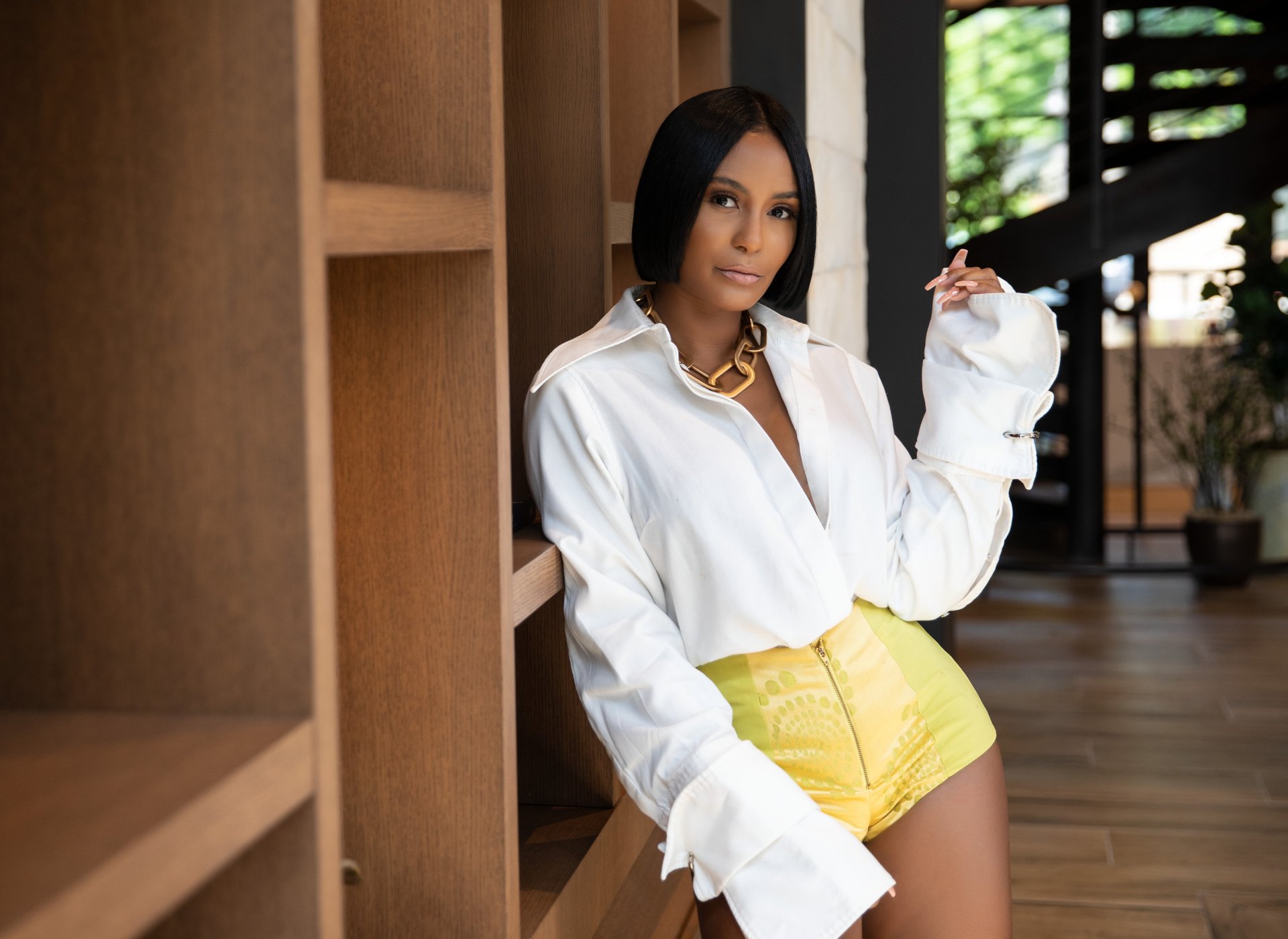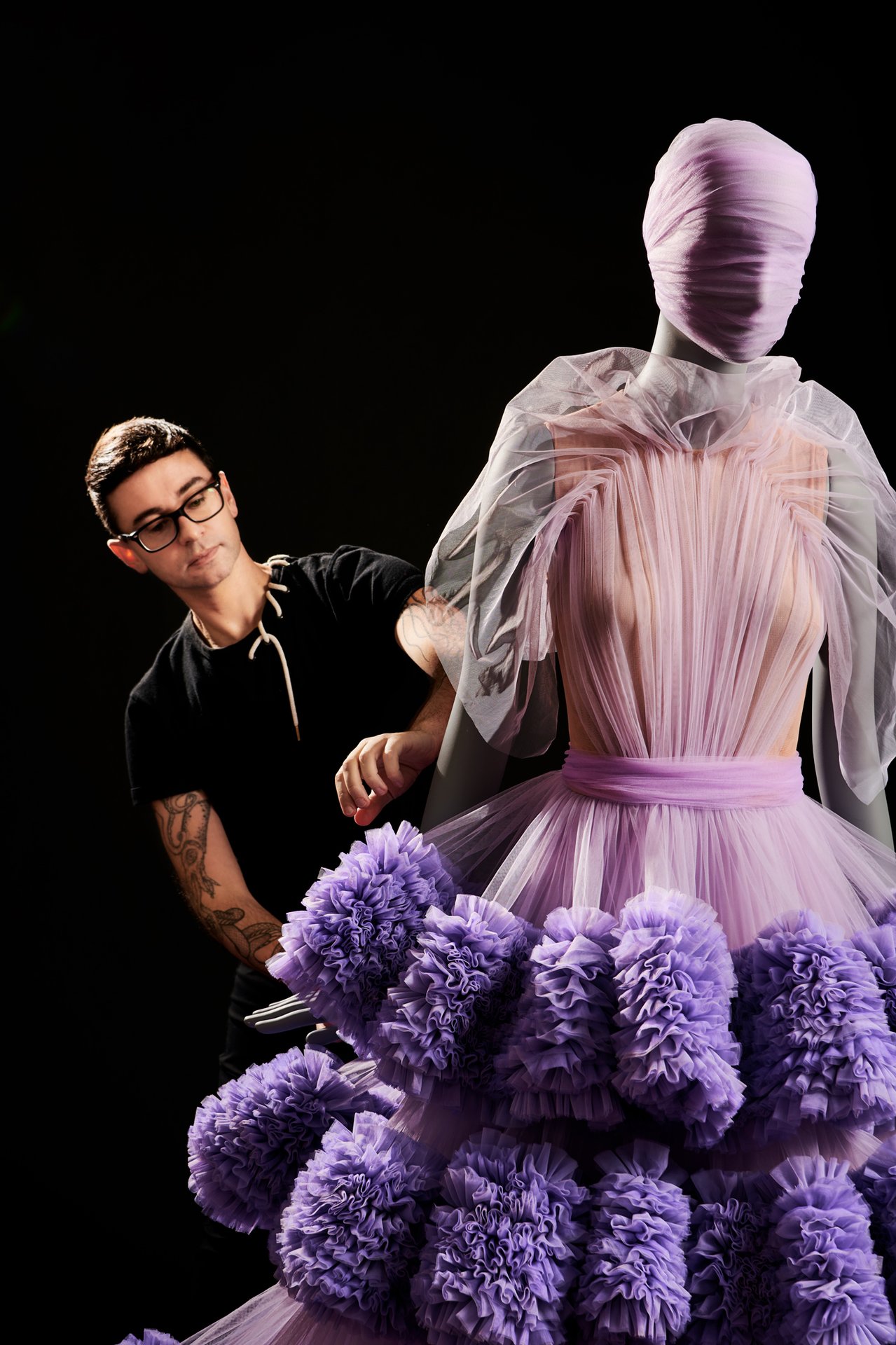It’s not unusual for millions of us to naturally start out loving something we’re good at — until we don’t. That’s somewhat how designer Kara Chin’s story goes. The Long Island native began as a stylist back in 2014 with the help of Ashaunna Ayers, who believed in her and offered her a chance. It wasn’t that simple, of course. Prior to her styling days, she was a student at Atlanta’s Spelman College studying Political Science thinking she’d become a lawyer. Post-Spelman, she was running a style blog that served as an outlet for the creativity brewing inside of her while pregnant with her son and in graduate school at Georgia State University. Shortly after finishing school, she landed a gig as a Marketing Manager at Bacardi, then moved back to New York where she worked in corporate marketing for T-Mobile until acknowledging Long Island and the city weren’t for meant her anymore. After six months she returned to the A and went from a hobby fashion blogger to a full-time stylist with Sevyn Streeter becoming her first big client. From there, she styled Boosie Badazz, Dej Loaf and other notables. All seemed promising until the fervor of styling wore off, and she started seeing herself in the light of a designer, a vision that came from her wanting things that didn’t exist in the market.
Today, Chin is the founder and designer of A-19, which launched in 2018 and became known for its wearable statement pieces or, as the brand ethos goes, “memorable moments.” One unique tidbit about Kara as a designer is she’s the first to tell you: “I understand that my clothing isn’t for everyone.”
“It was a big struggle for me at first,” she said. “I was super focused on designing for the customer. But, once, I got away from that idea. I started loving and producing way more.”
Here, we learn the trials and tribulations the once-tomboy had to go through to get her line going and how culture and necessity taught her how to design.
When did you first realize you wanted to pursue a career as a designer?
Truthfully, I credit my mother for inspiring me to do so. Watching my mom maneuver, run and own her own clothing store called “Lady Vonzetta” when I was a child is what initially sparked my interest. More recently, it was watching my boyfriend and his friend who have their own business succeed. It helped me gather the courage. It’s funny how life plays out and how things will align at the appropriate moment because after that revelation and me saying “okay, I can do this,” I started meeting all the right people.
I read that you have no formal training in design. Who taught you, or how did you learn?
Two things: culture and necessity. My mother and father are Jamaican, and if you know anyone Jamaican yourself or anything about Jamaicans, you know we have a very flashy culture. Growing up, my parents were doing exceptionally well for themselves. My mother had an abundance of furs and jewelry. I was so captivated by it all but what made it even more special was she produced her own stuff. As a kid, I would witness her take a plain jean jacket and turn it into this incredible creation, and that went on for years because she never liked items as they were. She constantly wanted to redesign them. That’s the culture.
As time went on and I grew up, we fell on tough times because my father left us and designing became more necessary. Money became very tight and we weren’t in a position to spend lavishly anymore. It was me operating out of a need. The money wasn’t there so I had to get creative and learn how to reinvent clothes because we couldn’t afford to spend on them anymore. Back then I had to repair things on my own when they would rip or get worn out. When I think back, I laugh a lot because I spent many of my teenage years on punishment as I would steal my mom’s clothes and wear them to school; she was so stylish. That’s the necessity.
What was your biggest fear when going out and establishing your own line?
Without a doubt, rejection. I also dealt with many setbacks when it came to finding the right seamstress and manufacturer. The first seamstress did good work but wasn’t very fast at producing, leading to many unsatisfied clients. I tried working with another seamstress in Atlanta and had my patterns and samples stolen. Manufacturer-wise, I tried using a company out in LA because there are none in Atlanta, but they were too overpriced. From that point forward, it was a great deal of trial and error. I finally discovered a unicorn in both, thanks to my fabric supplier knowing some people locally.


